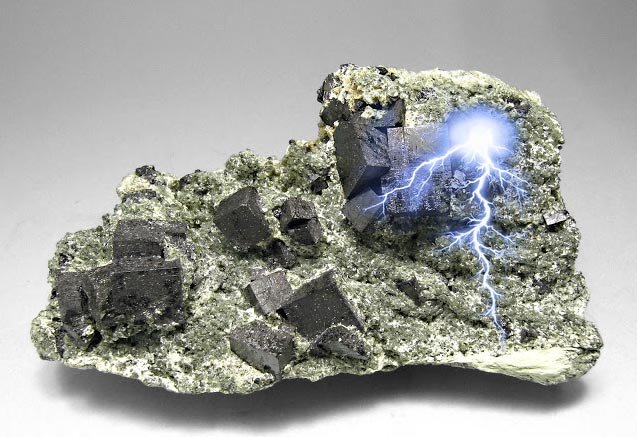Properties of Perovskite Oxide for the generation of electric energy
A study published in January 2017 showed that a solution of Perovskite Photovoltaic Oxide exhibited an adjustable profile to gamma light energy radiation, allowing its application in both absorption and energy conversion. This oxide has a structure that can be used as ferroelectric, pyroelectric and piezoelectric material.
With this characteristic, the study suggested that the substance can be applied in its solid state to conserve solar energy, kinetic energy and thermal energy simultaneously. The ferroelectric, pyroelectric and piezoelectric properties were reported at room temperature.
The research also identified that the element has visible light absorption capability. The stoichiometric composition and also the potassium deficiency of this element were studied by the researchers.
The results of the research were considered a significant improvement compared to other studies done with different compositions. From these data, researchers say that it is possible to pave the way for the development of systems and technologies for capturing and storing energy with hybrid sensors, which could convert multiple sources of energy into electricity simultaneously and in the same material.
It is worth remembering that Perovskite is already used in solar cells.
What is Perovskita?
Perovskite is calcium oxide and titanium. This mineral is quite rare in nature and can be found in the form of crystals. The element is present mainly in metamorphic rocks.
The perovskite was discovered by Gustav Rose in the year 1839, in the region of the Urals of Russia. The oxide has a crystalline appearance and has the differential of being a material with ferroelectric effect, being considered a superconductor. For this reason, it has been studied as a source for the generation of electric energy.
Photovoltaic solar energy is already being produced from cells that use the perovskite, being a possible alternative source of energy thanks to its very particular properties of magnetism and electricity.
In Brazil, perovskite solar cells have already been developed by Unicamp (University of Campinas). The material was considered cheaper than silicon and, therefore, researchers at the Institute of Chemistry (IQ) of Unicamp decided to produce the solar cells of perovskite, with application directed to the generation of electric energy. The technology proved to be quite efficient. The result of this study was presented in the master dissertation of the chemist Rodrigo Szostak.


This post has received a 3.13 % upvote from @drotto thanks to: @banjo.
Congratulations @edgarob! You have completed some achievement on Steemit and have been rewarded with new badge(s) :
Click on any badge to view your own Board of Honor on SteemitBoard.
For more information about SteemitBoard, click here
If you no longer want to receive notifications, reply to this comment with the word
STOPCongratulations @edgarob! You have completed some achievement on Steemit and have been rewarded with new badge(s) :
Click on any badge to view your Board of Honor.
For more information about SteemitBoard, click here
If you no longer want to receive notifications, reply to this comment with the word
STOPDo not miss the last announcement from @steemitboard!
Congratulations @edgarob! You have received a personal award!
Click on the badge to view your Board of Honor.
Do not miss the last post from @steemitboard:
Congratulations @edgarob! You received a personal award!
You can view your badges on your Steem Board and compare to others on the Steem Ranking
Vote for @Steemitboard as a witness to get one more award and increased upvotes!
Thanks for sharing... Love it.
@ca-life, Kindly stop spamming this comment on hundreds of posts, please!